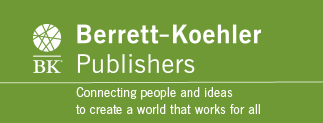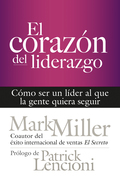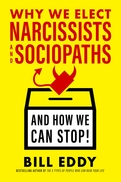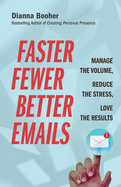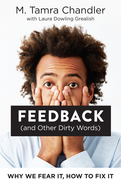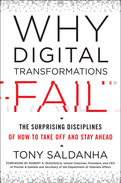Search Results: ""
Results 1033-1038 of 1358
From purchasing pay-per-view pornography to smoking pot, many so-called Muslim terrorists prove by their actions that they aren't motivated by devotion to religion, Leena Al Olaimy argues. So why do they really turn to violence, and what does that tell us about the most effective way to combat terrorism?
Al Olaimy sets the stage by providing a quick, thoughtful grounding in the birth of Islam in a barbaric Game of Thrones–like seventh-century Arabia, the evolution of fundamentalist thought, and the political failures of the postcolonial period. She shows that terrorists are motivated by economic exclusion, lack of opportunity, social marginalization, and political discrimination. This is why using force to counter terrorism is ineffective—it exacerbates the symptoms without treating the cause. Moreover, data shows that military interventions led to the demise of only 12 percent of religious terrorist groups.
Combining compelling data with anecdotal evidence, Al Olaimy sheds light on unorthodox and counterintuitive strategies to address social woes that groups like ISIS exploit. For example, she describes how Indonesia, the world's most populous Muslim country, has decreased terrorism while paradoxically becoming more overtly religious. Or how Mechelen, the city with Belgium's largest Muslim population, adopted integration policies so effective that not one of its 20,000 Muslims left to join ISIS. Using religion, neuroscience, farming, and even love, this book offers many inspiring examples and—for once—an optimistic outlook on how we can not just fight but prevent terrorism.
Al Olaimy sets the stage by providing a quick, thoughtful grounding in the birth of Islam in a barbaric Game of Thrones–like seventh-century Arabia, the evolution of fundamentalist thought, and the political failures of the postcolonial period. She shows that terrorists are motivated by economic exclusion, lack of opportunity, social marginalization, and political discrimination. This is why using force to counter terrorism is ineffective—it exacerbates the symptoms without treating the cause. Moreover, data shows that military interventions led to the demise of only 12 percent of religious terrorist groups.
Combining compelling data with anecdotal evidence, Al Olaimy sheds light on unorthodox and counterintuitive strategies to address social woes that groups like ISIS exploit. For example, she describes how Indonesia, the world's most populous Muslim country, has decreased terrorism while paradoxically becoming more overtly religious. Or how Mechelen, the city with Belgium's largest Muslim population, adopted integration policies so effective that not one of its 20,000 Muslims left to join ISIS. Using religion, neuroscience, farming, and even love, this book offers many inspiring examples and—for once—an optimistic outlook on how we can not just fight but prevent terrorism.
What makes for a truly exceptional leader? Certainly, leaders need people skills, execution skills, a deep knowledge of industry trends, the ability to articulate a vision, and more—they must be competent—but that's just the tip of the iceberg. What's below the waterline? What's deep inside the best leaders that makes them different?
Mark Miller contends it is their leadership character. In this enlightening and entertaining business fable, young and ambitious leader Blake Brown goes on a journey to discover the five unique traits exhibited by exceptional leaders and how to cultivate them.
This book shows us that leadership needn't be the purview of the few—it is within reach for millions around the world. The Heart of Leadership is a road map for every person who desires to make a difference in the lives of others and become a leader people want to follow.
¿Qué es lo que hace que un líder sea verdaderamente excepcional? Sin duda, los líderes necesitan don de gentes, habilidades de ejecución, un conocimiento profundo de las tendencias de la industria, y la capacidad de articular una visión; y más aún: deben ser competentes. Pero eso es sólo la punta del iceberg. ¿Qué hay debajo de la línea de flotación? ¿Qué se esconde dentro de los mejores líderes, que los hace diferentes?
Mark Miller sostiene que es el carácter. En esta fábula empresarial, clarificadora y amena, el joven y ambicioso líder Blake Brown emprende un viaje para descubrir los cinco rasgos únicos que distinguen a los líderes excepcionales, y cómo cultivarlos.
Este libro nos muestra que el liderazgo no tiene por qué ser la meta de unos pocos, sino que está al alcance de millones de personas de todo el mundo. El corazón del liderazgo es un mapa para todo aquel que desee marcar una diferencia en la vida de los demás y convertirse en un líder que la gente quiera seguir.
Mark Miller contends it is their leadership character. In this enlightening and entertaining business fable, young and ambitious leader Blake Brown goes on a journey to discover the five unique traits exhibited by exceptional leaders and how to cultivate them.
This book shows us that leadership needn't be the purview of the few—it is within reach for millions around the world. The Heart of Leadership is a road map for every person who desires to make a difference in the lives of others and become a leader people want to follow.
¿Qué es lo que hace que un líder sea verdaderamente excepcional? Sin duda, los líderes necesitan don de gentes, habilidades de ejecución, un conocimiento profundo de las tendencias de la industria, y la capacidad de articular una visión; y más aún: deben ser competentes. Pero eso es sólo la punta del iceberg. ¿Qué hay debajo de la línea de flotación? ¿Qué se esconde dentro de los mejores líderes, que los hace diferentes?
Mark Miller sostiene que es el carácter. En esta fábula empresarial, clarificadora y amena, el joven y ambicioso líder Blake Brown emprende un viaje para descubrir los cinco rasgos únicos que distinguen a los líderes excepcionales, y cómo cultivarlos.
Este libro nos muestra que el liderazgo no tiene por qué ser la meta de unos pocos, sino que está al alcance de millones de personas de todo el mundo. El corazón del liderazgo es un mapa para todo aquel que desee marcar una diferencia en la vida de los demás y convertirse en un líder que la gente quiera seguir.
Bestselling author, therapist, lawyer, and mediator Bill Eddy describes how dangerous, high-conflict personalities have gained power in governments worldwide—and what citizens can do to keep these people out of office.
Democracy is under siege. The reason isn't politics but personalities: too many countries have come under the sway of high-conflict people (HCPs) who have become politicians. Most of these high-conflict politicians have traits of narcissistic personality disorder, antisocial (i.e., sociopathic) personality disorder, or both. This is the first and only guide for identifying and thwarting them.
HCPs don't avoid conflict, they thrive on it, widening social divisions and exacerbating international tensions. Eddy, the world's leading authority on high-conflict personalities, explains why they're so seductive and describes the telltale traits that define HCPs—he even includes a helpful list of forty typical HCP behaviors.
Drawing on historical examples from Hitler, Stalin, Mao, and Nixon to Trump, Maduro, and Putin, Eddy shows how HCPs invent enemies and manufacture phony crises so they can portray themselves as the sole heroic figure who can deal with them, despite their inability to actually solve problems. He describes the best ways to expose HCPs as the charlatans they are, reply to their empty and misleading promises, and find genuine leaders to support. Eddy brings his deep psychotherapeutic experience to bear on a previously unidentified phenomena that presents a real threat to the world.
Democracy is under siege. The reason isn't politics but personalities: too many countries have come under the sway of high-conflict people (HCPs) who have become politicians. Most of these high-conflict politicians have traits of narcissistic personality disorder, antisocial (i.e., sociopathic) personality disorder, or both. This is the first and only guide for identifying and thwarting them.
HCPs don't avoid conflict, they thrive on it, widening social divisions and exacerbating international tensions. Eddy, the world's leading authority on high-conflict personalities, explains why they're so seductive and describes the telltale traits that define HCPs—he even includes a helpful list of forty typical HCP behaviors.
Drawing on historical examples from Hitler, Stalin, Mao, and Nixon to Trump, Maduro, and Putin, Eddy shows how HCPs invent enemies and manufacture phony crises so they can portray themselves as the sole heroic figure who can deal with them, despite their inability to actually solve problems. He describes the best ways to expose HCPs as the charlatans they are, reply to their empty and misleading promises, and find genuine leaders to support. Eddy brings his deep psychotherapeutic experience to bear on a previously unidentified phenomena that presents a real threat to the world.
Business communication expert and bestselling author Dianna Booher shares practical wisdom on how to write effective emails that get results and how to organize documents to gain control and increase your productivity.
Today, most business writing is email writing. We handle even our most important customer transactions, internal operations, and supplier partnerships solely by email.
Yet many of us still struggle to write emails that get results. And we often are so overwhelmed by the sheer volume of emails that we feel as though we're in email jail!
How we handle email has a large impact on the trajectory of our career. Emails can build or destroy credibility, clarify or confuse situations for our coworkers and customers, and reduce or increase security risks and legal liabilities. This book will help you master your emails and stand out as a clear, credible communicator. After all, clear, credible communicators become leaders in every industry.
With more than three decades of experience analyzing emails across various industries for corporate clients, Booher offers guidance on how to identify and stop email clutter so you can increase productivity while improving communication flow. In this book, you will learn how to:
• Compose actionable emails quickly by following Booher's philosophy of Think First, Draft Fast, and Edit Last
• Write concise emails that get read so you get a quick response
• Organize a commonsense file storage system that helps you find documents and emails quickly to attach and send
• Present a professional image when you email prospects, customers, and coworkers
• Be aware of legal liabilities and security risks as you send and receive email
Today, most business writing is email writing. We handle even our most important customer transactions, internal operations, and supplier partnerships solely by email.
Yet many of us still struggle to write emails that get results. And we often are so overwhelmed by the sheer volume of emails that we feel as though we're in email jail!
How we handle email has a large impact on the trajectory of our career. Emails can build or destroy credibility, clarify or confuse situations for our coworkers and customers, and reduce or increase security risks and legal liabilities. This book will help you master your emails and stand out as a clear, credible communicator. After all, clear, credible communicators become leaders in every industry.
With more than three decades of experience analyzing emails across various industries for corporate clients, Booher offers guidance on how to identify and stop email clutter so you can increase productivity while improving communication flow. In this book, you will learn how to:
• Compose actionable emails quickly by following Booher's philosophy of Think First, Draft Fast, and Edit Last
• Write concise emails that get read so you get a quick response
• Organize a commonsense file storage system that helps you find documents and emails quickly to attach and send
• Present a professional image when you email prospects, customers, and coworkers
• Be aware of legal liabilities and security risks as you send and receive email
A practical and irreverent guide to taking the sting out of feedback and reclaiming it as a motivating, empowering experience for everyone involved.
Feedback: the mere mention of the word can make our blood pressure rise and our defenses go up. For many of us, it's a dirty word that we associate with bias, politics, resentment, and self-doubt. However, if we take a step back and think about its true intent, we realize that feedback needn't be a bad thing. After all, understanding how others experience us provides valuable opportunities to learn and grow.
Authors M. Tamra Chandler and Laura Grealish explain how feedback got such a bad rap and how to recognize and minimize the negative physical and emotional responses that can erode trust and shut down communication. They offer a new and more ambitious definition of feedback, explore the roles we each play as Seeker, Extender, and Receiver, and introduce the three Fs of making feedback focused, fair, and frequent. You'll also find valuable exercises and strategies, along with real-world examples that illustrate how you can put these ideas into action and join in the movement to fix feedback, once and for all.
When it's done right, feedback has been proven to be the most effective means of improving communication and performance for you and your organization. It's too important to give up, and with Chandler and Grealish's help, you'll be able to use it deftly, equitably, and effectively.
Feedback: the mere mention of the word can make our blood pressure rise and our defenses go up. For many of us, it's a dirty word that we associate with bias, politics, resentment, and self-doubt. However, if we take a step back and think about its true intent, we realize that feedback needn't be a bad thing. After all, understanding how others experience us provides valuable opportunities to learn and grow.
Authors M. Tamra Chandler and Laura Grealish explain how feedback got such a bad rap and how to recognize and minimize the negative physical and emotional responses that can erode trust and shut down communication. They offer a new and more ambitious definition of feedback, explore the roles we each play as Seeker, Extender, and Receiver, and introduce the three Fs of making feedback focused, fair, and frequent. You'll also find valuable exercises and strategies, along with real-world examples that illustrate how you can put these ideas into action and join in the movement to fix feedback, once and for all.
When it's done right, feedback has been proven to be the most effective means of improving communication and performance for you and your organization. It's too important to give up, and with Chandler and Grealish's help, you'll be able to use it deftly, equitably, and effectively.
Former Procter & Gamble Vice President for IT and Shared Services, Tony Saldanha gives you the keys to a successful digital transformation: a proven five-stage model and a disciplined process for executing it.
Digital transformation is more important than ever now that we're in the Fourth Industrial Revolution, where the lines between the physical, digital, and biological worlds are becoming ever more blurred. But fully 70 percent of digital transformations fail.
Why? Tony Saldanha, a globally awarded industry thought-leader who led operations around the world and major digital changes at Procter & Gamble, discovered it's not due to innovation or technological problems. Rather, the devil is in the details: a lack of clear goals and a disciplined process for achieving them. In this book, Saldanha lays out a five-stage process for moving from digitally automating processes here and there to making digital technology the very backbone of your company. For each of these five stages, Saldanha describes two associated disciplines vital to the success of that stage and a checklist of questions to keep you on track.
You want to disrupt before you are disrupted—be the next Netflix, not the next Blockbuster. Using dozens of case studies and his own considerable experience, Saldanha shows how digital transformation can be made routinely successful, and instead of representing an existential threat, it will become the opportunity of a lifetime.
Digital transformation is more important than ever now that we're in the Fourth Industrial Revolution, where the lines between the physical, digital, and biological worlds are becoming ever more blurred. But fully 70 percent of digital transformations fail.
Why? Tony Saldanha, a globally awarded industry thought-leader who led operations around the world and major digital changes at Procter & Gamble, discovered it's not due to innovation or technological problems. Rather, the devil is in the details: a lack of clear goals and a disciplined process for achieving them. In this book, Saldanha lays out a five-stage process for moving from digitally automating processes here and there to making digital technology the very backbone of your company. For each of these five stages, Saldanha describes two associated disciplines vital to the success of that stage and a checklist of questions to keep you on track.
You want to disrupt before you are disrupted—be the next Netflix, not the next Blockbuster. Using dozens of case studies and his own considerable experience, Saldanha shows how digital transformation can be made routinely successful, and instead of representing an existential threat, it will become the opportunity of a lifetime.
